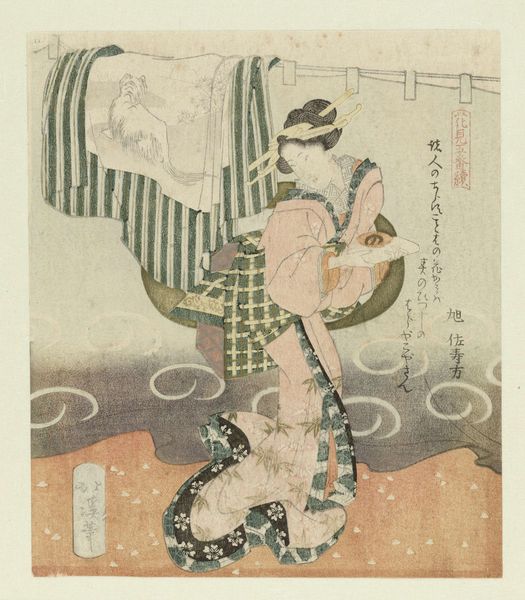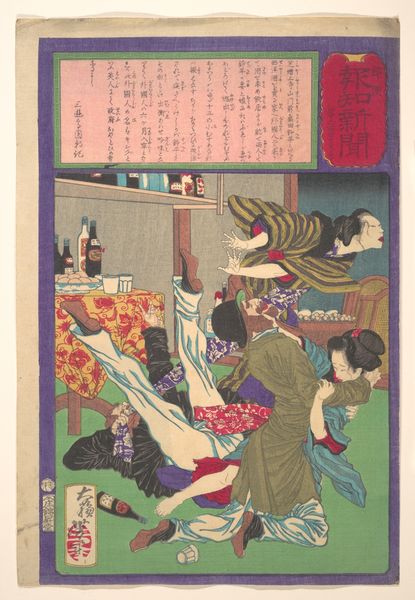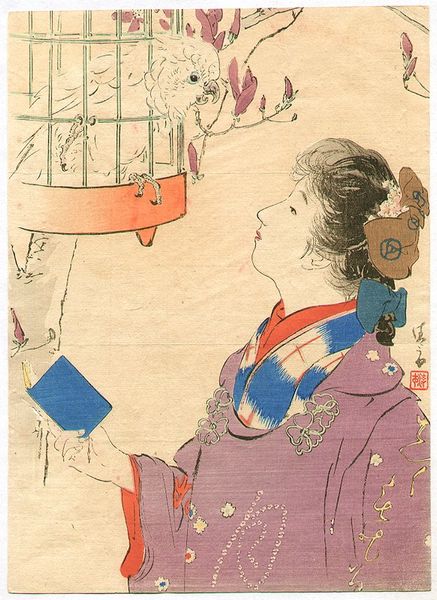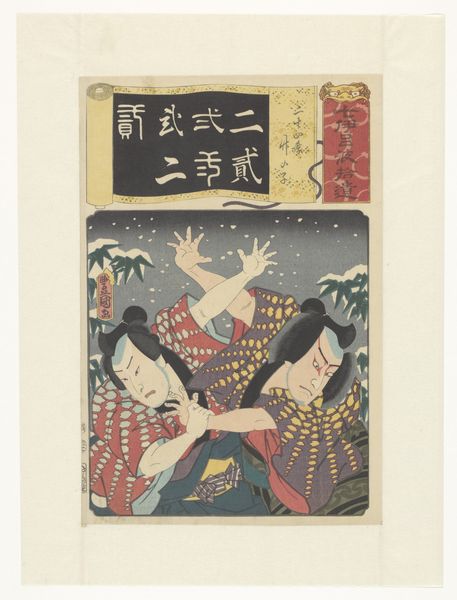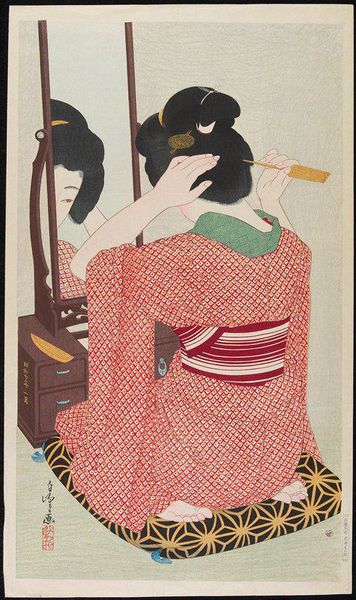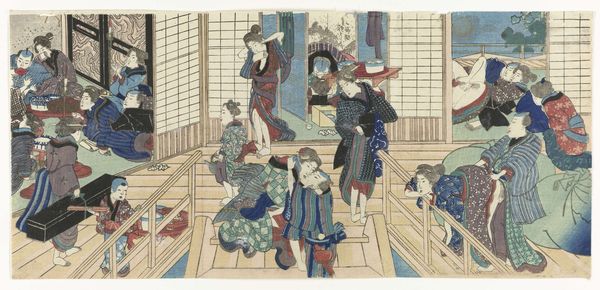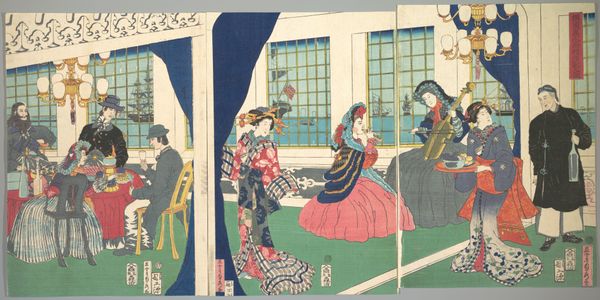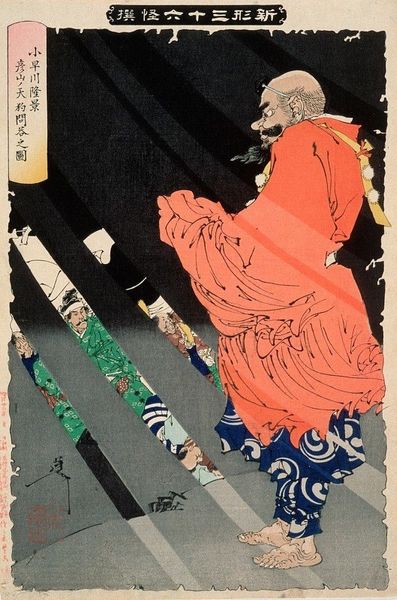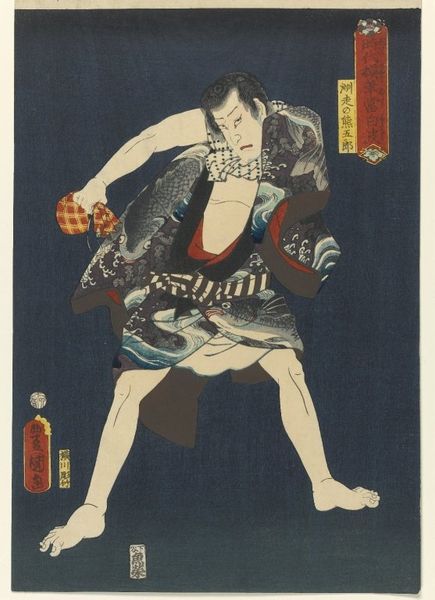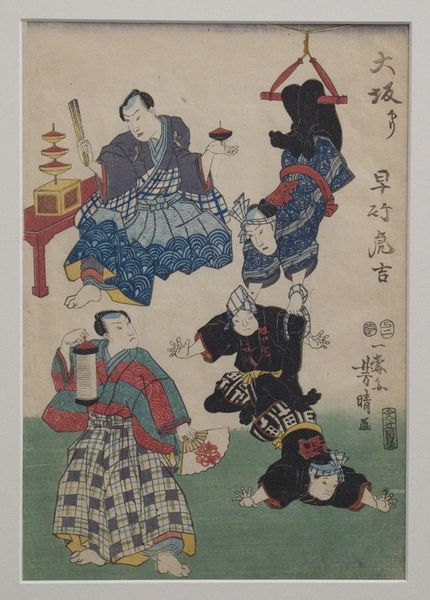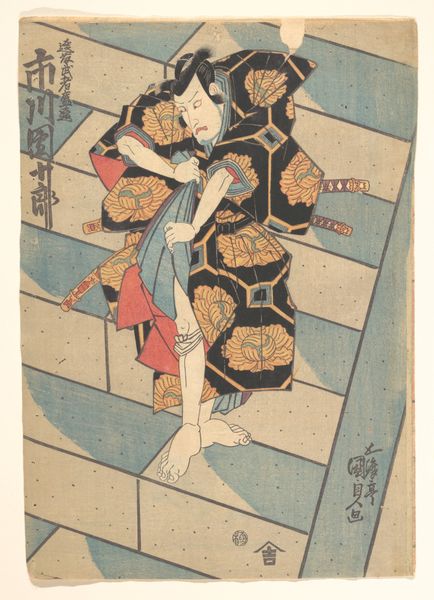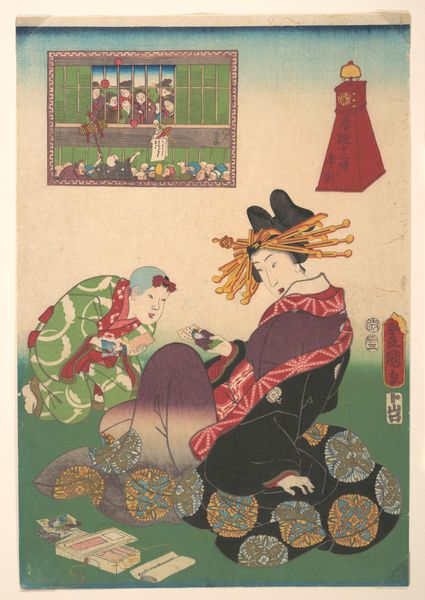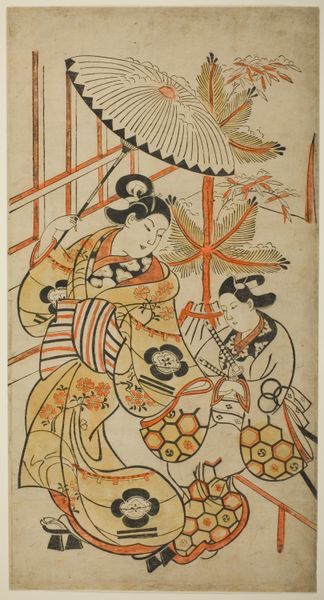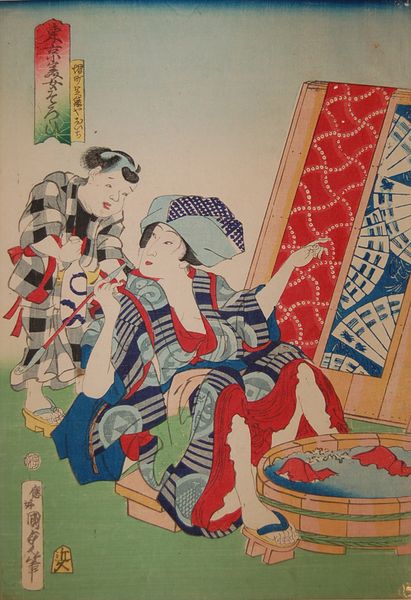
Dancing at the New Carlton Café in Shanghai 1924
yamamuratoyonari
minneapolisinstituteofart
woodblock-print, print, woodblock-print
woodblock-print
ukiyo-e
woodblock-print
orientalism
genre-painting
Dancing at the New Carlton Café in Shanghai was made around 1924 by Yamamura Toyonari as a color woodblock print. The image captures a modern, cosmopolitan scene, reflective of Shanghai's allure in the early 20th century. It's hard to miss the gender dynamics at play. Women are central to the image, both as subjects and as consumers in this new social space. The flapper dresses, bobbed hair, and the act of dancing itself signify a break from traditional roles, embracing a more liberated, Western-influenced identity. Yet, this modernity is also filtered through a Japanese artist's eye, creating a fascinating mix of cultural perspectives. Toyonari, trained in traditional Japanese art, brings a unique lens to this depiction of Shanghai's nightlife. One can only imagine the feelings evoked in a Japanese public by the modernity of Shanghai, and the emotional impact that a scene of cosmopolitanism could have. This artwork, in its depiction of dance and leisure, mirrors the complex intersections of identity, culture, and gender in a rapidly changing world.
Comments
In 1924 Kōka created a set of ten prints that includes images of beautiful women, landscapes, and bird-and-flower pictures. Part of the set is an unusual interior view of a modern dance hall in booming, bustling Shanghai. Dancing at the New Carlton Café in Shanghai (Odori Shanhai Nyū Karuton shoken) features thoroughly modern women in Western gowns and bobbed hairstyles. An anomaly not only in Kōka’s oeuvre but for the entire shin hanga movement, the image reflects the shifting interests and chic fashions of ‘The Roaring Twenties’ in East Asia. The print is actually an improved version of the same subject as featured in a painting he created earlier that year.
Join the conversation
Join millions of artists and users on Artera today and experience the ultimate creative platform.
